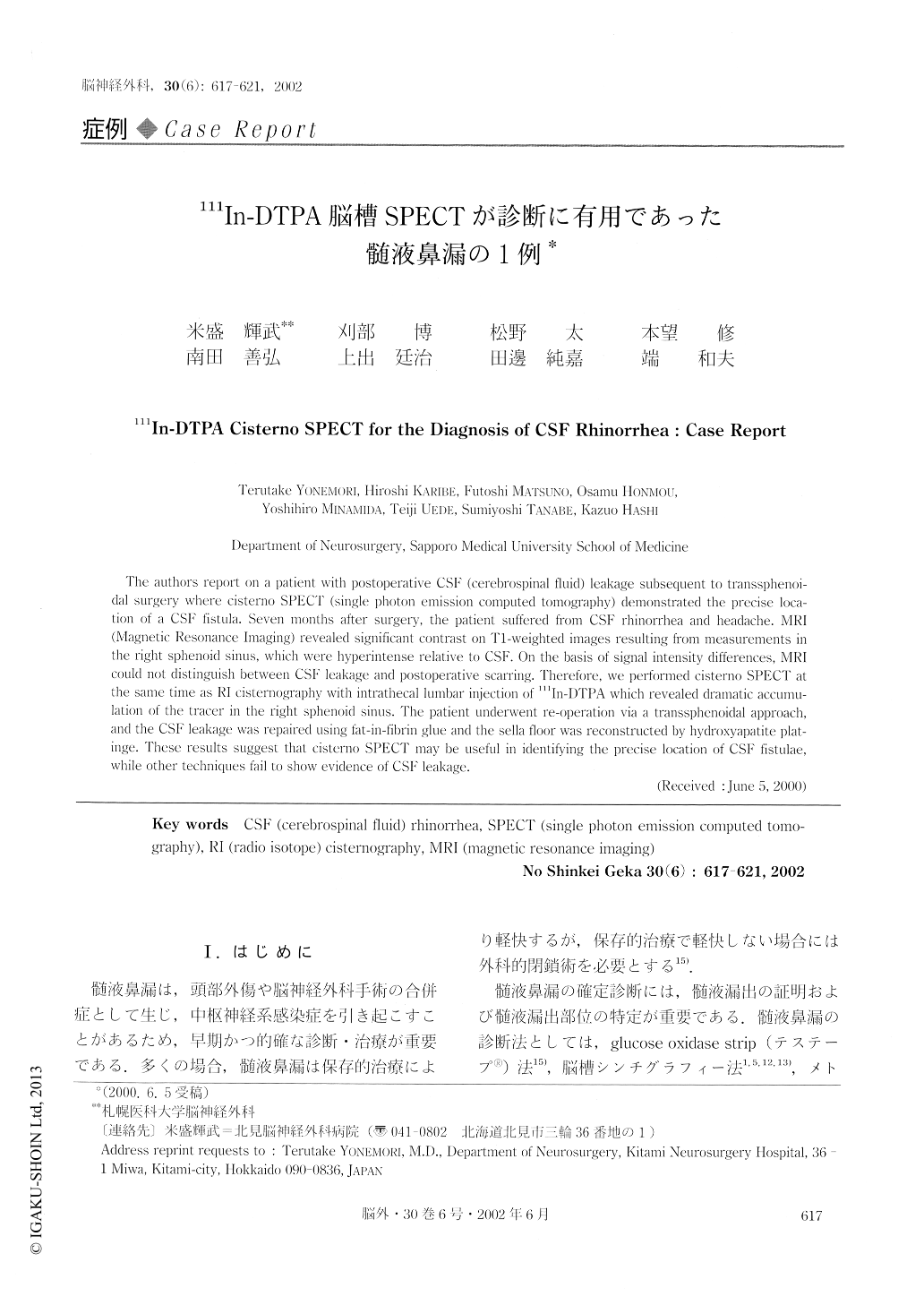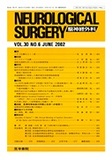Japanese
English
- 有料閲覧
- Abstract 文献概要
- 1ページ目 Look Inside
Ⅰ.はじめに
髄液鼻漏は,頭部外傷や脳神経外科手術の合併症として生じ,中枢神経系感染症を引き起こすことがあるため,早期かつ的確な診断・治療が重要である.多くの場合,髄液鼻漏は保存的治療により軽快するが,保存的治療で軽快しない場合には外科的閉鎖術を必要とする15).
髄液鼻漏の確定診断には,髄液漏出の証明および髄液漏出部位の特定が重要である.髄液鼻漏の診断法としては,glucose oxidase strip(テステープ®)法15),脳槽シンチグラフィー法1,5,12,13),メトリザマイドCT法8)などが報告されているが,これらの検査法は感度が低いため髄液漏が微量の場合には検出できないこともある.また,MRIによる瘻孔の検出が診断に有用であるとする報告もあるが2-4,6,8,9),瘻孔が小さい場合や貯留液が髄液と異なった信号強度を呈する場合には確定診断に苦慮することも多い.
The authors report on a patient with postoperative CSF (cerebrospinal fluid) leakage subsequent to transsphenoidal surgery where cisterno SPECT (single photon emission computed tomography) demonstrated the precise location of a CSF fistula. Seven months after surgery, the patient suffered from CSF rhinorrhea and headache. MRI (Magnetic Resonance Imaging) revealed significant contrast on T1-weighted images resulting from measurements in the right sphenoid sinus, which were hyperintense relative to CSF. On the basis of signal intensity differences, MRI could not distinguish between CSF leakage and postoperative scarring.

Copyright © 2002, Igaku-Shoin Ltd. All rights reserved.


